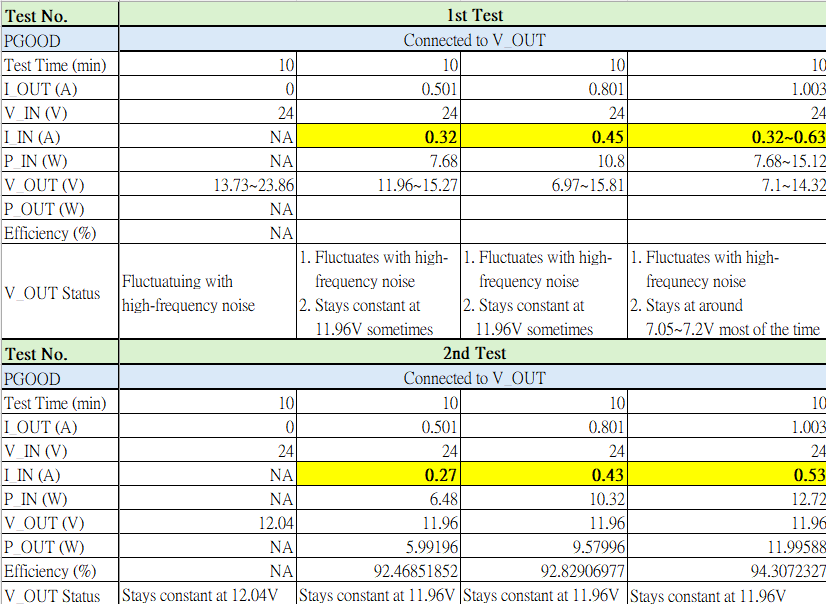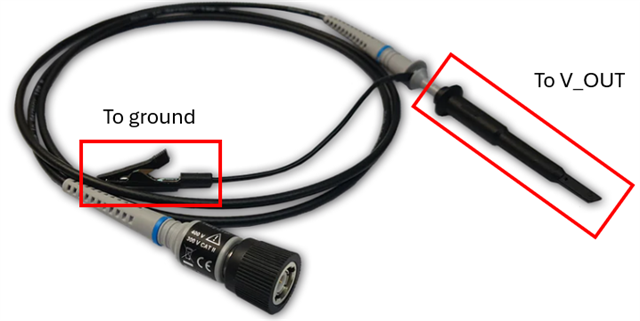Tool/software:
Hi experts,
I have used LMR36015AEVM for load-dump test, the voltage was clamped at 48V which is within the input voltage spec (60V) of the EVM.
However, after the load-dump test was finished, the output waveform of the EVM would have some fluctuations rather than keeping at some constant values.
When the PGOOD (pin2 of J4) was not connected to V_CC or V_OUT, I can still get about 0.512V at PGOOD.
I would like to know is the behavior of PGOOD normal as described?
Thanks!





